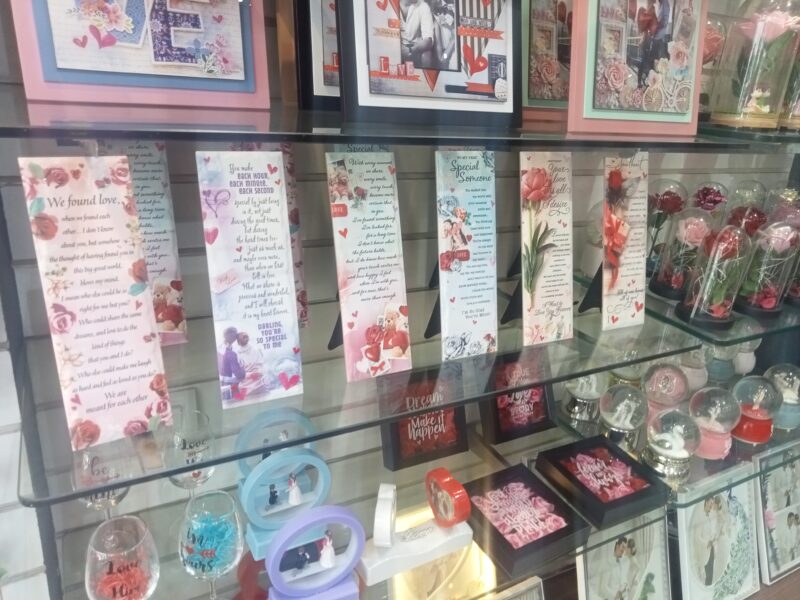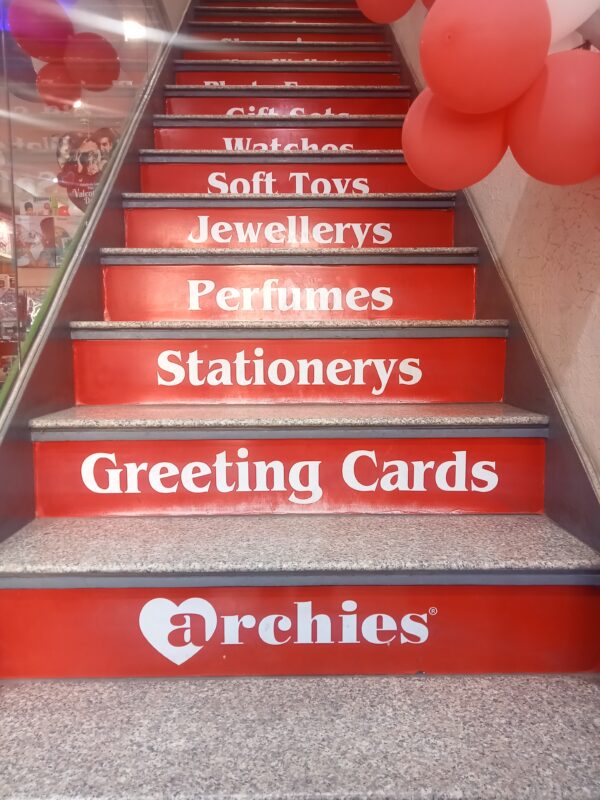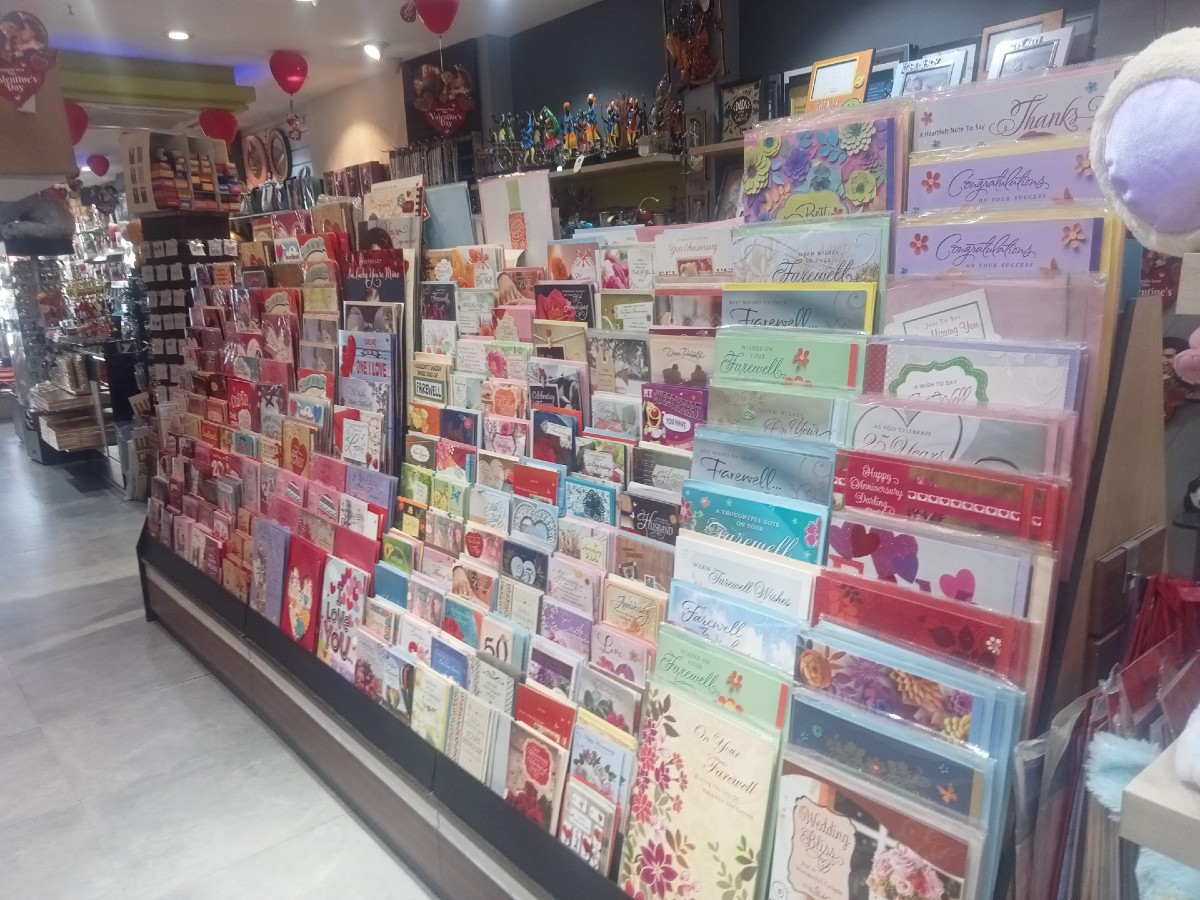When 38-year-old Aslam Nabi was in his teenage years, he received a greeting card from his girlfriend on Valentine’s Day. The musical card played Beethoven’s Fur Elise whenever he opened it, as the teddy bears and a heart popped out of the card screen. Nabi kept it for years until he lost it on a fateful day in his late twenties.
“It was special. In those days, we were not allowed to have love affairs. But surprisingly, when my mother saw that card, she just smiled and she knew who gave it to me. It made it even more special. Greeting cards in those days meant a lot to people, and people specifically visited shops to buy them. It feels like a different era now,” says Nabi, who is now married to his girlfriend.
Greeting cards, popular for birthdays, anniversaries or the annual holidays, were once souvenirs of love and care. Days before the festival, people would spend hours deciding about what to write on these cards, and how a certain card can best express their feelings. They also allowed people to say things that could not be said verbally. In all its essence, they were a token of sincere appreciation of having loved ones in life.

However, within a few years, the popularity of greeting cards has trickled down due to the advent of e-cards, emails, and instant messaging.
“We understand that the popularity of greeting cards have been little down due to WhatsApp and other social media, but there are [still] some people who believe in the physical presence of the wishes. It really makes a difference to people if somebody writes messages or gives greeting cards. There is a niche section that prefers physical cards and it is the only reason we are present in the market with the cards,” says Anita Chhokar, Product Planning Manager at Archies Limited.
Rajeev Verma, a manufacturer who runs Signature Greetings, confirms this. “Of course, the availability of online messaging and e-cards has affected the industry but there are still people who tend to give physical cards to their loved ones. It gives a special touch to their wishes and people keep it as a token of love. It is true that a lot of companies have stopped ordering greeting cards, but there are people who buy them, especially students. There are still buyers in the market,” shares Rajeev, who has been running a distribution network in Delhi for the last 23 years.
“Since online gifting has affected retail business as people buy gifts from websites like Amazon or Flipkart and everything is done digitally, greeting cards are [only] demanded from corporate offices, delegates and all office exchanges where people give greetings on festivities. A card is most valuable for them and an apt way of communicating,” says Ashok, a greeting card trader in Delhi NCR.

Like any other business, the aftermath of Covid-19 has significantly affected the market. Ram Chopra, who runs a shop of greeting cards in Delhi’s Chawri Bazar, shares that he switched to greeting cards from wedding cards in 2018 when his brother visited foreign countries and brought with him new designs.
“When we switched to greeting cards, there were a lot of orders in bulk that we received. During that time, we would receive orders from foreign countries. With time, the market boomed even in India in cities like Kolkata,” he says.
Chopra informs that the sales after Covid have dropped to 15% of what it used to be in festivals like New Year’s and Valentine’s Day.
“After the pandemic, people did not use physical cards for almost 2-3 years and this also affected their attitude towards them. They could send a card or a wish with just a click and this disturbed our business a lot. This year on Valentine’s Day, we have barely printed any cards because our previous stock has not been sold and it does not make sense to invest more in this card,” says Chopra.
Echoing the same sentiments, Pushpa Jhuraney tells Patriot that she has seen a significant drop in the sales of greeting cards over the years.
“I have been running the store since the initial days when greeting cards were introduced in the city. These cards used to sell like hot cakes but now the sales have come down to a trickle,” says Jhuraney, as she sits in an empty Archies store in Lajpat Nagar. Stocks of cards for Valentine’s Day were on display but there was hardly any visitor to buy them.
“The sales significantly dropped after 2019, and has come down to 25% of what it was in 2017 and 2018. We have tried everything to attract the customers but nothing seems to be working. Not just greeting cards, we have varieties of cards which include corporate cards, printed wall cards, and cards accompanied by a gift. People now prefer to send cards over emails and this has affected the business. In fact, we have tried to attract customers by offering them online services but it didn’t work either. Sometimes, I think of switching to some other business as this seems unlikely to revive,” adds Jhuraney.
While Jhuraney ponders about switching to some other business, 55-year-old Ashok has already picked up a side business. “Those of us who have been trading greeting cards have picked up side businesses. For example, I supply packing papers to different shops in Delhi NCR. There is a great demand for packing papers and it is evergreen work. However, to completely dissociate myself from greeting cards is tough. I have been into supplying greetings for the past 25 years. I need a financial boost to set up my own shop. There are several people like me who haven’t been able to dissociate themselves from greeting cards. It’s definitely a dying thing but bas gaadi chal rahi hai (we are managing to survive),” shares Ashok.
Speaking on the prices of cards, Jhuraney shares that they would sell cards as expensive as Rs 2,000 but now they find it difficult to sell even the cheaper ones.
“Do you see these cards, the big ones with multiple pages? People would come to our gallery and buy these but now you can see the reality,” she says as she opens an arm-length card with multiple pages.
As the audience of greeting cards has become niche, customised cards with personal messages have become popular too, especially online. Sources from Archies Limited tell Patriot that the company is expecting to generate at least 15% from online sales next year. The company hit the E-commerce business a few months ago.
“We are getting the orders online to make customised cards for customers. There is this transformation that is happening. There are people who cannot express themselves, we have the cards for them. But then there are some people who want to express themselves, so we print whatever they want us to and send it to their loved ones,” says Chhokar.
She also shares that they are encouraged to design expensive cards with good material due to the audience becoming niche and specific.
The sales data of Archies has revealed that tier 2 and tier 3 cities are more inclined towards buying products and visiting retail stores as compared to people in metropolitan cities, informs Chhokar.

“In metropolitan cities, people have many options to wish their loved ones in different ways like tourism. They are well-equipped and well-expressed with their friends and families. But tier 2 and 3 cities are still sprouting, so the popularity in these cities for greeting cards is much more than in metropolitan cities. There are cities in Bihar and Uttar Pradesh that are doing better than Delhi. This is what we are witnessing with our sales as well,” she says.
While teddy bears contribute 8% of company’s revenue and mugs provide 6%, greeting cards in these cities are customers’ favourite, with faux flower planters, quotations, and talking mugs also popular.
However, Ashok has a different experience to share. As per his experience, cities like Delhi, Chandigarh, and Lucknow have the highest demand for greeting cards.
“Obviously, in metropolitan cities, the demand is comparatively more. However, it also depends on several factors.Purchasing power is crucial. Cards are expensive things to buy and not necessarily valued by everyone,” he says.
“I don’t know about other cities that well but the problem is that the shopkeepers outside Delhi, whenever I go to supply, don’t pay the amount right away.Rather they tell me that it would be done as per the sales. If these greetings don’t sell, then I have to take them back. Now, imagine, in which profession do we behave like this? I am a middleman and can’t bear the brunt of lack of returns. To whom would I resell?” he rues.
This Valentine’s Day, Archies started a campaign to bring back greeting cards into the market in digital world. The company believes that the new age demands a new perspective and is making efforts to gain social media traction through influencer marketing. It uploaded a video concerning the lost importance of greeting cards in people’s lives.
“We’ve also launched a Digital Campaign around Valentine’s day which talks about the importance of exchanging greeting cards and hits the nostalgia among people. Everyone’s aware of the degree of damage the pandemic left on industries and sectors across the globe” says Varun Moolchandani, Executive Director, Archies Limited.





